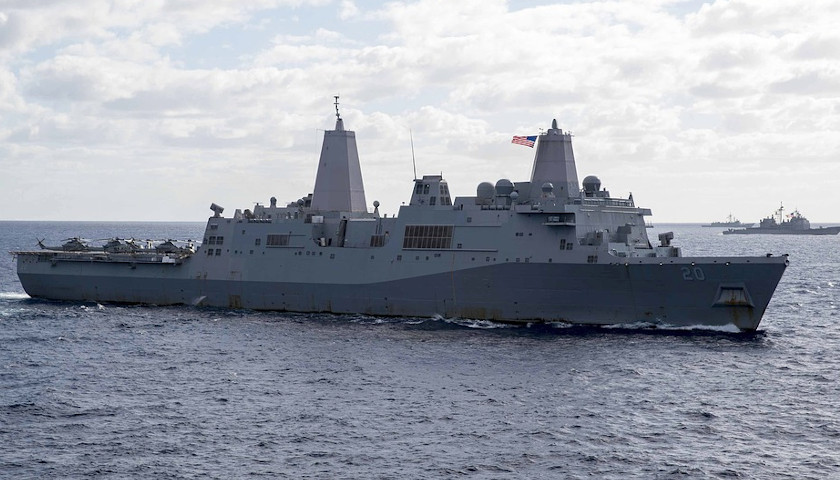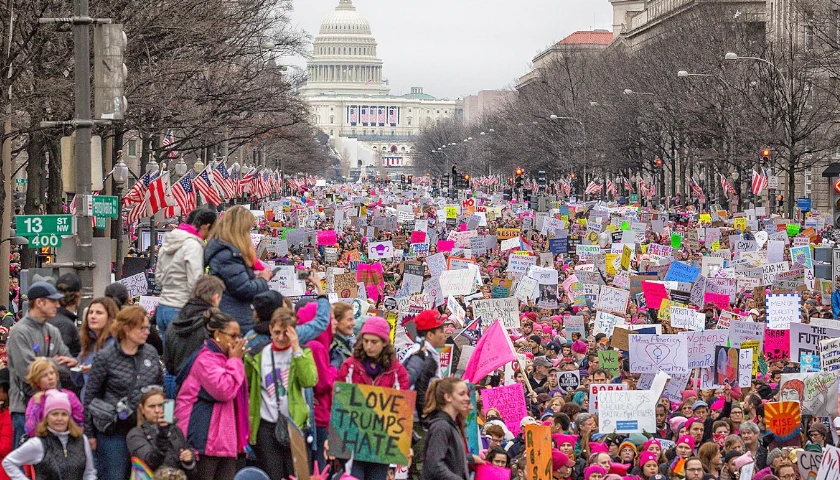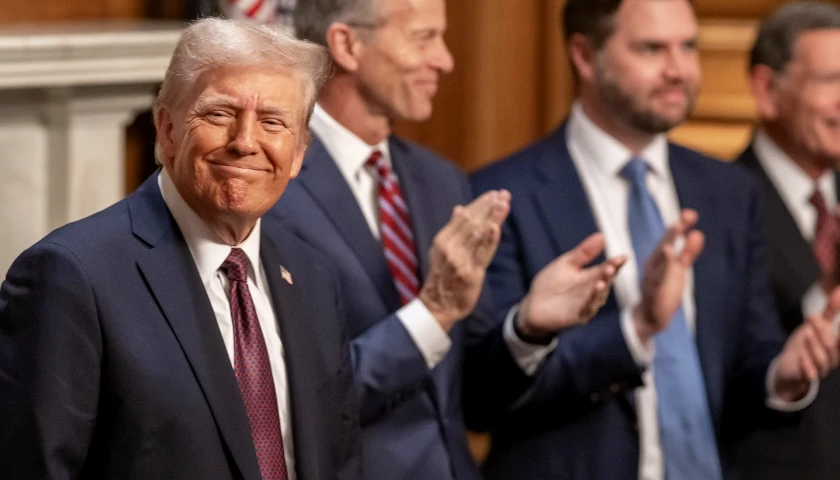by Alexander B. Gray & Douglas W. Domenech
Not since the October 1962 Cuban missile crisis has an adversarial foreign power posed a direct military threat in close proximity to the U.S. mainland. Yet as the United States and the People’s Republic of China deepen their long-term competition, U.S. territories and possessions in the Pacific and the Caribbean find themselves on the front lines of Beijing’s malign influence, economic predation, and military ambitions. Washington policymakers have thus far barely recognized the growing threat to vital American interests on our own territory or in adjacent waters.
U.S. territorial equities around the world represent a patchwork of different administrative models and governing arrangements, reflecting the varied histories of American territories and possessions. In the Pacific are the territories of Guam, the Commonwealth of the Northern Mariana Islands (CNMI), and American Samoa. In the Caribbean are Puerto Rico and the U.S. Virgin Islands (USVI). Additionally, the U.S. administers nine possessions in the Pacific (Baker Island, Howland Island, Jarvis Island, Johnston Atoll, Kingman Reef, Midway Atoll, Palmyra Atoll, and Wake Island) and one disputed possession in the Caribbean (Navassa Island).
STRATEGIC GEOGRAPHY
Roughly 3.5 million Americans live in the five U.S. Territories as citizens or nationals. U.S. Census data indicates that the population of Puerto Rico alone (estimated at 3.2 million as of 2019) is larger than that of 20 states. The Exclusive Economic Zone (EEZ) of all U.S. territories and possessions totals over 1.3 million square miles, with the U.S. possessions in the Pacific totaling over 750,000 square miles by themselves.
U.S. territories and possessions remain as strategically significant as they were when originally obtained. Puerto Rico and the USVI sit astride two critical sea lanes: the Mona Passage connecting the Continental United States to South America and the principal container route from the Middle East and Europe through the Panama Canal. Navassa Island, long disputed with Haiti, sits at the Windward Passage’s southern approach between Cuba and Hispaniola, roughly 100 miles from Naval Station Guantanamo Bay.
America’s Pacific possessions were acquired between the 1850s and the early 1900s to safeguard the sea lanes between Hawaii and the U.S. West Coast and East Asia. They play the same strategic role today as they did in the time of President John Quincy Adams, who prophetically wrote in the 1820s that the “furnishing of commerce and fishery extending to the islands of the Pacific… still require that the protecting power of the Union should be displayed under its flag.”
Guam and the CNMI are located in the North Pacific, part of the Micronesian island group that also includes the independent countries of Palau, the Marshall Islands, and the Federated States of Micronesia, with whom the United States have Compacts of Free Association providing guaranteed military access and the right of denial for their use by a foreign power. Guam, only about 1,500 miles from Japan, is home to roughly 7,000 U.S. military personnel, including a U.S. Navy attack submarine squadron and ship repair facility, a major U.S. Air Force base, multiple U.S. Coast Guard cutters, and, over the next decade, 5,000 relocated Marines from Okinawa. Tinian, in the CNMI, will serve as an alternate airfield for U.S. military aircraft.
American Samoa, about 2,000 miles north of New Zealand in the Polynesian island group of the South Pacific, is currently the focus of a feasibility study on whether to base Coast Guard Fast Response Cutters there to uphold regional security and assist local partners in countering China’s malign activity.
Even the United States’ Pacific possessions (grouped collectively as the Minor Outlying Islands) are strategically vital. Located in the North Pacific along the same critical sea lanes between the U.S. West Coast and East Asia that had originally prompted their acquisition in the nineteenth century, these small islands offer welcome, sovereign American territory in the vast expanse of the Pacific.
Situated between Hawaii and Guam, Wake Island is undergoing an $87 million upgrade by the U.S. Air Force to better support flight operations. Both Midway Atoll and Johnston Atoll previously housed U.S. military installations and could be reactivated to provide additional U.S. power projection across the North Pacific.
CHINESE ENCROACHMENT
China’s global approach to strategic competition has shown no signs of respecting U.S. territories or possessions, however. Indeed, given the relative neglect U.S. territories receive at the highest levels in official Washington, these small islands are even more vulnerable to Beijing’s predations.
The CNMI, for instance, has been inundated by the “birth tourism” phenomenon emanating from China and encouraged by a parole visa program initiated under the Obama administration. Birth tourism has overwhelmed the CNMI’s medical capacity, and, in recent years, foreign births have exceeded native ones there. At the same, four of China’s largest construction firms and a major casino operator were found by U.S. authorities to be persistently paying local workers below the minimum wage.
Across U.S. possessions and territories in the Pacific, China’s malign activity is damaging the local economy and regional ecology. Persistent and pervasive illegal, unreported, and unregulated (IUU) fishing by Chinese vessels has been common in American Samoa, Guam, the CNMI, and as far east as Hawaii. Overfishing and depleted stocks have roiled territorial economies, with a tuna cannery on American Samoa, one of the island’s largest employers, even temporarily suspending operations due to lack of fish.
China also frequently intrudes into EEZs across the region, including with hydrographic survey ships and even with auxiliary general intelligence vessels (AGIs), which have entered EEZs as far as Hawaii or northern Australia. As the former Director of Intelligence for U.S. Pacific Fleet, James E. Fanell, has written, unfettered activity by such vessels can provide critical information to counter U.S. Navy submarine activity, compromise undersea cables, and establish underwater surveillance systems. Without a regular air or sea presence across this vast region, the U.S.’s ability to ensure the integrity of its territories’ EEZs is in question.
Even the U.S. Caribbean territories are not exempt. The USVI has seen a significant increase in overdoses from Chinese fentanyl. Puerto Rican politicians have spoken openly of conducting subnational trade deals with China and welcomed hundreds of Chinese businessmen to the island, prompting speculation that the U.S. territory could play a role in the One Belt, One Road initiative.
A CALL TO ACTION
It is high time for Washington to wake up to Beijing’s aggressive approach to U.S. territories. First, the White House should recognize that threats to U.S. sovereign territory require the same policy response they would receive if they occurred to a U.S. state.
To that end, the Administration could establish an assistant secretary-level Policy Coordinating Committee responsible for integrating U.S. territories and possessions into the broader national security strategy, and particularly U.S.-China competition. Chaired by the National Security Council (NSC) and with representation from the Departments of the Interior, State, Defense, Homeland Security, and others, this body would elevate the importance of U.S. territories within the national security structure.
Second, the NSC could create a Director-level position responsible for integrating U.S. territories and possessions into the broader national security discussion across regional and functional areas. Having an official inside the White House complex directly accountable for the integrity of U.S. territories would generate needed energy across the U.S. government.
Third, the predatory economic behavior that Beijing has practiced in CNMI and other U.S. territories, as it has in so many less developed countries, should receive additional attention from U.S. regulators. Major construction projects in strategic locations like Saipan and Tinian on the CNMI should be viewed with deep concern, given both China’s history of labor abuses and the island’s military significance.
Finally, the U.S. Coast Guard is the entity most capable of enforcing U.S. sovereignty and safeguarding vital interests across the territories and possessions. Whether it is enforcing EEZs in the Minor Outlying Islands, preventing IUU fishing across the Pacific, or countering narcotics and human trafficking in the Caribbean, the Coast Guard is an essential tool in blunting Beijing’s assault on U.S. territories. While it continues to be under-resourced relative to the scale of its missions, creative thinking in Washington should be applied to both allocate existing assets to protecting U.S. sovereignty while arguing persuasively for more resources in the years ahead.
Most Americans know the territories and possessions as vacation destinations or exotic locales from World War II documentaries. Beijing, however, sees them as geographic steppingstones in an expanding global presence with economic, diplomatic, and military significance. The old American approach to the territories of “out of sight, out of mind” no longer works in an era of Great Power competition. Washington owes the American citizens and residents who call these islands home the same level of attention it would give a national security threat against the Continental United States.
– – –
Alexander B. Gray, a Senior Fellow in National Security Affairs at the American Foreign Policy Council, served on the staff of the National Security Council from 2018 to 2021, including as Director for Oceania & Indo-Pacific Security. Douglas W. Domenech served as Assistant Secretary for Insular & International Affairs at the U.S. Department of the Interior (2017-2021).





